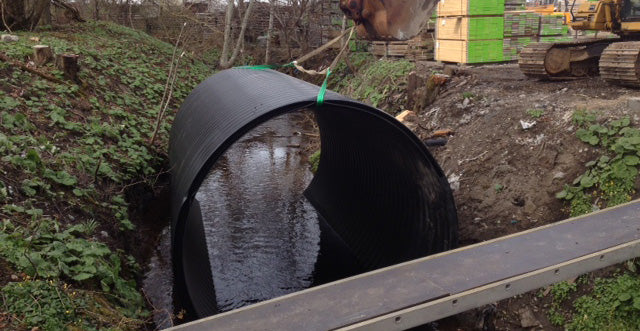Accuracy Pad Construction for Stable Structures
Accuracy Pad Construction for Stable Structures
Blog Article
Culvert Setup Facilitated: Step-by-Step Guide for Success
Installing culverts might look like an uncomplicated job, yet guaranteeing a successful result requires cautious planning and implementation. From picking the appropriate culvert size to incorporating proper drain procedures, each action in the setup procedure plays a vital duty in the performance and longevity of the culvert system. By complying with a systematic approach and taking note of key information, the installation can proceed smoothly, minimizing prospective issues down the line. Remain tuned to uncover the essential steps and factors to consider that can make culvert installment a seamless and effective venture.
Picking the Right Culvert Dimension
Picking the appropriate culvert size is critical for ensuring efficient water flow and architectural stability in culvert setup projects - Pad Construction. The dimension of the culvert straight influences the circulation capability of water via the framework. A culvert that is as well tiny can cause flooding and overflow, while one that is as well large may result in lowered water rate, possibly triggering sediment buildup and obstructions
To determine the appropriate culvert size, aspects such as the watershed area, top flow rates, and hydraulic effectiveness need to be thoroughly taken into consideration. Computations based upon these specifications help in choosing a size that can sufficiently manage the predicted water quantity while reducing the danger of clogs and structural failure.
It is necessary to consult design guidelines and criteria to make certain that the chosen culvert dimension satisfies the project requirements and neighborhood guidelines (Pad Construction). By selecting the ideal culvert dimension, project managers can maximize water flow, stop potential concerns, and boost the total performance and long life of the culvert setup
Preparing the Installment Website
Reliable culvert setup demands meticulous preparation of the installment website to ensure optimal structural support and capability. Before starting the setup process, it is important to remove the website of any type of particles, greenery, or obstructions that might impede the culvert's placement.
Additionally, it is crucial to take into consideration elements such as dirt make-up, groundwater degrees, and ecological influences when preparing the setup site. Conducting an extensive site analysis can aid identify any possible challenges or threats that might influence the culvert's performance. By putting in the time to prepare the installation website correctly, you can assist assure an effective culvert installation that fulfills architectural requirements and makes certain long-lasting capability.
Placing the Culvert Correctly

The quality at news which the culvert is put is vital for maintaining an appropriate slope for water circulation. A steady slope aids avoid merging and promotes effective drain. In addition, the culvert should be oriented appropriately to ensure that the inlet and electrical outlet are in the correct areas. This alignment is essential for the culvert to work successfully in managing water flow.
Backfilling and Compacting the Soil
Proper backfilling and compaction of the soil around the culvert is important to make sure security and prevent potential issues in the future. When the culvert is properly placed, the following vital action is to backfill the area around it with suitable material.
After placing the backfill material, it is necessary to portable it in layers of uniform density. Using a compactor or a mechanical meddle, portable the soil gently to prevent harming the culvert. Compaction assists in minimizing the chances of settlement and guarantees consistent support around the culvert. It is essential to compact the dirt equally on all sides of the culvert to keep its architectural top article honesty.
Correct backfilling and compaction not just supply stability to the culvert yet additionally help in protecting against soil disintegration and maintaining the durability of the culvert system.
Guaranteeing Correct Drain Integration
Incorporating efficient water drainage remedies plays a crucial duty in the overall capability and durability of culvert installments. Proper drainage assimilation is necessary for handling water flow, protecting against disintegration, and guaranteeing the structural honesty of the culvert system. To achieve this, it is important to design a comprehensive drain strategy that thinks about elements such as the volume of water anticipated, the topography of the location, and the sort of dirt present.

In addition, including attributes like erosion control steps, such as riprap or plant life, can even more boost the performance of the drainage system. By thoroughly intending and applying these water drainage options, culvert setups can operate effectively and stand up to the test of time.
Verdict
Finally, proper culvert installment is essential for preserving effective drain systems. By choosing the right culvert size, preparing the installation site, positioning the culvert correctly, backfilling and compacting the soil, and ensuring proper drainage assimilation, success can be attained. Complying with these actions will certainly assist make sure the longevity and efficiency of the culvert, ultimately contributing to the overall success of the drainage system.
Report this page